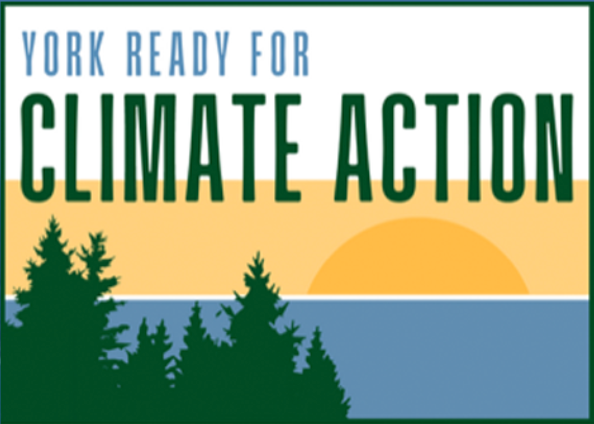Our Positive Climate Impact
How land conservation helps prepare York for a more sustainable future
Forests, rivers, farmland, marshes, beaches – we’re so lucky to have access to this amazing diversity of natural landscapes in the town of York. Over the past three decades, York Land Trust has helped protect more than 4,800 acres of this land. We’ve done this to protect local wildlife habitat and to safeguard our community’s access to natural areas, including farmland and lands with cultural and historical significance.
But as we look to the future, we recognize that our role in the community and potential for impact has expanded. We see that we have the capacity to help our community prepare for and fight against the impacts of climate change.
As a coastal town, we know that we’re vulnerable to sea level rise and the flooding that comes along with it. We’ve already seen beach stones wash ashore higher than they have in the past, and floodwaters reach Shore Road more often than feels safe or comfortable. But we also know that land protection helps lessen the impacts of these and other threats.
With each additional acre we preserve, we’re building toward a healthier and more sustainable future for the town of York.
Here’s how.
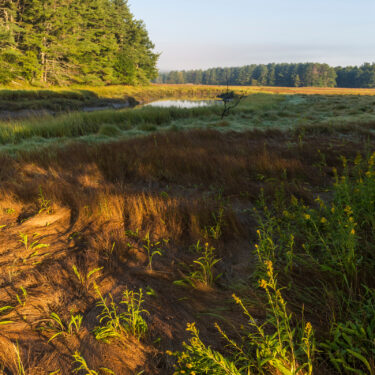
Goldenrod on the edge of a salt marsh along the York River at the Smelt Brook Preserve in York, Maine.
Keeping Forests as Forests…
Buffers floods, tempers heatwaves, absorbs greenhouse gases. The forests of York contain deep root systems that absorb rainwater and prevent streams and rivers from overflowing during large storms. Leaf cover provides shady refuge for humans and wildlife during heatwaves. Trees pull carbon dioxide out of the atmosphere during photosynthesis, helping to slow the accumulation of greenhouse gases in the atmosphere.
Keeping Marshes as Marshes…
Bolsters coastlines against erosion, absorbs floodwaters, minimizes wave intensity during storms. Like forests, marsh grasses hold soil tightly in place. This not only protects our coastline from eroding into the sea with sea level rise, but also helps reduce flooding by sponging up water as it slams against the shore. Scientists also estimate that salt marshes can absorb carbon 30 to 50 times faster than forests can.
Keeping Natural Areas Undeveloped…
Improves community wellbeing, strengthens economies, and supports wildlife. Preserving our community’s ability to spend time in nature enriches all of our lives and adds economic value to land. These undeveloped areas also provide critical habitat for wildlife to nest, feed, migrate and prosper.
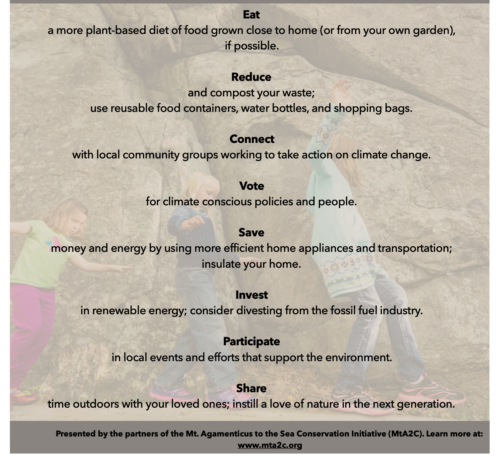 What You Can Do
What You Can Do
Climate change is a global problem that requires global action. Conserving land is just one of the many steps we must take to slow climate change. Here are other actions you can take to work toward a healthier and more sustainable future.
To learn more about how YLT has worked to decrease our carbon emissions at our headquarters, click here.
Power Through Partnerships
Addressing climate change requires teamwork and collaboration. That’s why we’ve formed strong partnerships with other ambitious groups in the region working toward a more sustainable future.
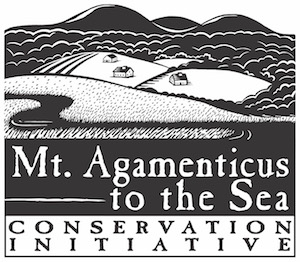
Mount Agamenticus to the Sea Conservation Initiative (MtA2C)
MtA2C is working to preserve 19,000 acres of land within a focus area that includes parts of Kittery, Eliot, York, Ogunquit, Wells, and South Berwick. This region has the state’s highest density of rare and endangered species, and protecting habitat for that wildlife is critical to helping them persist through climate change. Learn more about MtA2C’s efforts at www.mta2c.org.
York Ready For Climate Action
York Ready For Climate Action is a grassroots organization dedicated to moving toward a York powered by 100% renewable energy by 2050. Learn more about their work at www.yorkreadyforclimateaction.org.
Updated June 2023
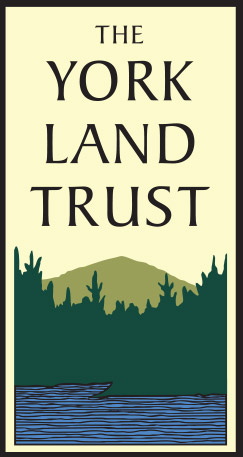
 MAKE A GIFT
MAKE A GIFT SUBSCRIBE
SUBSCRIBE TRAIL MAPS
TRAIL MAPS CONTACT US
CONTACT US MEMBERSHIP
MEMBERSHIP
